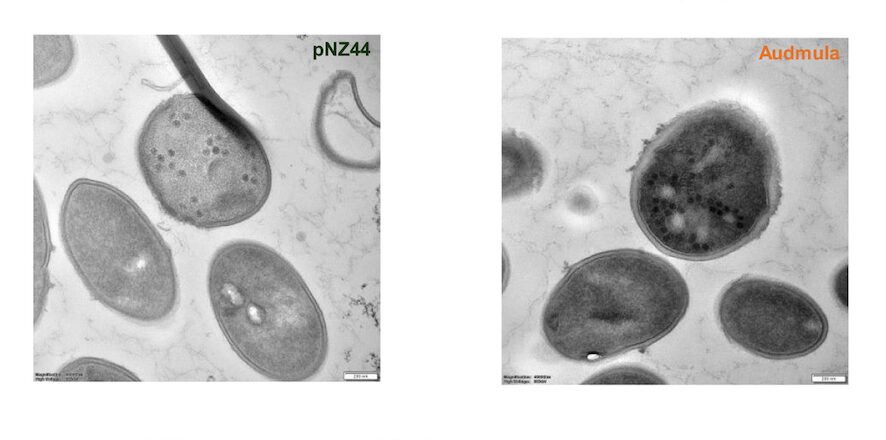
Bacteriophage research has seen a resurgence in recent years due to its potential for treating antibiotic-resistant bacteria. One of the critical ways to study phages is through visualization under a microscope. Microscopy techniques have come a long way in recent years, and there are many different types of microscopes that can be used to visualize phages. The type of microscope used will depend on the specific research question and the properties of the phage being studied. For example, electron microscopes provide high-resolution images of phages, but they require special preparation and handling, whereas light microscopes are less invasive and can be used to study phages in their natural environment.
In this article, we will take a closer look at the different types of microscopes that can be used for phage visualization, the techniques employed, and the importance of studying phages in this manner. We will explore the advantages and limitations of each type of microscope and the circumstances under which they are used. Additionally, we will delve into the latest advances in phage microscopy and their implications for future research.
Types of Microscopes for Phage Visualization
There are several types of microscopes that can be used to visualize bacteriophages, each with its own advantages and limitations. The most common types of microscopes used for phage visualization include:
Light Microscopy
Light microscopy is one of the most commonly used techniques for visualizing microbes, largely due to its affordability and accessibility. While it may not offer the highest resolution for studying phages, scientists often employ methods like bright-field, phase contrast, or fluorescence microscopy. In bright-field microscopy, a beam of light passes through the specimen, allowing direct observation of its shape and size, though the resolution is limited. Phase contrast microscopy, on the other hand, enhances image contrast by using a special condenser, making it more effective for observing details in the sample compared to bright-field.
Light microscopy can provide better (don’t get it wrong, it’s relative) visibility of phages in solution and is commonly used for studying the behaviour of phages and their hosts in liquid cultures. Since most of the advanced microscopy is not well compatible with fluid environments. Scientists have tried to make stains for phages (this study used flagella stain) so that they can enhance visibility in light microscopy. Fluorescence microscopy uses a special filter to excite specific dyes in the specimen, resulting in a brightly coloured image. This method is useful for identifying specific components of phages, such as viral proteins, but requires the use of fluorescent dyes and specialized equipment.
Transmission Electron Microscopy (TEM)
Transmission Electron Microscopy (TEM) is a powerful technique for visualizing bacteriophages at high resolution. It involves passing a beam of electrons through a thin section of the specimen and observing the resulting image on a screen. TEM can provide images at resolutions of a few nanometers and is particularly useful for studying the structure of phages. However, this method requires the use of a vacuum chamber and can be destructive to the specimen. Additionally, samples must be prepared in a specific way, such as being embedded in resin and thinly sectioned, before they can be viewed under TEM.
Scanning Electron Microscopy (SEM)
Scanning Electron Microscopy (SEM) is similar to TEM but uses a beam of electrons to scan the surface of the specimen rather than passing through it. This results in images that show the surface features of the specimen in great detail. SEM is particularly useful for studying the surface morphology of phages and can be used to examine the surface features of phages in their natural state. However, this method also requires the use of a vacuum chamber and can be destructive to the specimen.
Atomic Force Microscopy (AFM)
Atomic Force Microscopy (AFM) is a type of scanning probe microscopy that uses a small probe to scan the surface of the specimen. The probe is moved over the surface of the specimen, and the forces between the probe and the specimen are measured. AFM can provide images at resolutions of a few nanometers and is useful for studying the surface properties of phages. This method is particularly useful for studying the mechanical properties of phages and can be used to examine phages in their natural state without the need for a vacuum chamber. However, AFM is a relatively new technique and may not be as widely available as other methods.
Techniques for Phage Visualization
Once the type of microscope is chosen, there are various techniques that can be used to visualize phages. Some of the most commonly used techniques include:
Staining:
This involves the use of special dyes that can be used to colour the phages for better visualization. Some standard staining methods include negative staining, which uses a dark background to highlight the phages, and positive staining, which uses a bright background to highlight the phages.
Labelling:
This involves the use of special proteins or other molecules that can be added to the phages to make them visible under the microscope. These include fluorescent proteins, which can be used to label phages for fluorescence microscopy, or gold nanoparticles, which can be used to label phages for electron microscopy.
Culturing:
This involves growing phages in a bacterial culture and observing them as they infect and lyse the bacteria. This technique is particularly useful for studying the life cycle of phages and their interactions with bacteria.
Phage microscopy gallery




Importance of Phage Visualization
The ability to visualize phages under a microscope is crucial for understanding their biology and potential applications. Some of the key reasons why phage visualization is important include:
- Understanding Phage Structure: By visualizing phages under a microscope, scientists can study the physical structure of these viruses in great detail. This information is crucial for understanding how phages infect and replicate within their host cells.
- Identifying Phage-Bacteria Interactions: By observing phages in their natural habitat, scientists can study how these viruses
ICTV and morphological classification of bacteriophages
In 2022, ICTV changed the classification of some bacteriophages based on their morphological taxa. Prior to that, microscopy was a valuable tool for classification. The changes impacted the morphology-based families Myoviridae, Podoviridae, and Siphoviridae, and the order Caudovirales was removed and replaced by the class Caudoviricetes to group all-tailed viruses with icosahedral capsids and double-stranded DNA genomes, both of bacterial and archaeal origin. Click here to read the full ICTV article.
The choice of a microscopy technique depends on the research question and the sample. Light microscopy is the simplest and most widely used method for visualizing bacteriophages, but it has its limitations. TEM, SEM, and AFM provide much higher-resolution images, but they are more complex and expensive. As technology advances, researchers will have access to new and more powerful tools for studying bacteriophages.
More reading
- “Phage Microscopy” by David M. White, in “Phages: Methods and Protocols” edited by Margarita Salas, Springer, 2010.
- “Phage imaging: from electron microscopy to superresolution fluorescence” by T. J. Foster and R. W. Hendrix, in “Phages: Biology and Applications” edited by R. Calendar, CRC Press, 2013.
- “Scanning electron microscopy and atomic force microscopy of bacteriophages” by J. A. McEwan, in “Phages: Methods and Protocols” edited by Margarita Salas, Springer, 2010.
- “Bacteriophage Research: A Revitalized Approach to Antibiotics” by J. Soothill, Microbiology Today, vol. 36, pp. 122-125, 2009.
- “Phage Microscopy: Techniques and Applications” by K. M. Keiler, J. Bacteriol., vol. 193, pp. 727-735, 2011.
- “Visualizing Bacteriophages Using Transmission Electron Microscopy” by L. J. Black and R. J. Doyle, Methods Enzymol., vol. 504, pp. 3-23, 2012.
- “Scanning Electron Microscopy of Bacteriophages” by P. D. R. Moineau, J. Virol. Methods, vol. 128, pp. 97-106, 2005.
- “Atomic Force Microscopy of Bacteriophages” by J. R. Parsek and E. P. Greenberg, Nat. Rev. Microbiol., vol. 2, pp. 801-811, 2004.



[…] of understanding phage morphology, behavior, and interactions at the microscopic level. Through high-resolution imaging techniques such as transmission electron microscopy, researchers gain unprecedented insights into the structural intricacies of phages, witnessing the […]
[…] Performing transmission electron microscopy to visualize phage particles in your filtrate (lysate). This will deeply depend on the availability of the […]
[…] Transmission electron microscopy (TEM) is a powerful imaging technique that uses a beam of electrons to create high-resolution images of a sample. By employing a beam of electrons rather than conventional light, TEM allows researchers to delve into the intricacies of materials at the nanoscale level. This technique has proven indispensable in a multitude of scientific domains, including materials science, biology, and nanotechnology. It is widely used in various fields such as materials science, biology, and nanotechnology. In this article, we will explore the basics of transmission electron microscopy and its applications. […]
[…] Using a powerful microscope (Transmission Electron Microscope), researchers looked at phages before and after IC treatment. They saw that IC caused changes in the phage’s structure, particularly in its tail and protective shell. The phages looked damaged, and in many cases, their genetic material had leaked out. This damage meant the phages could no longer infect bacteria. […]